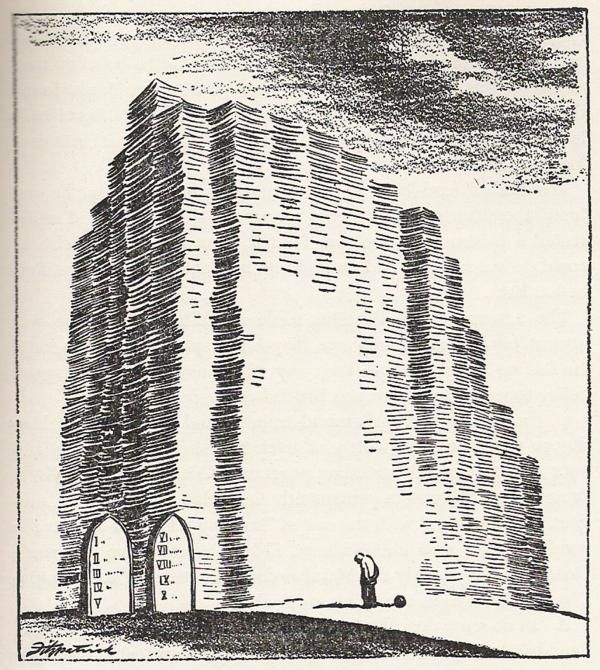I thought it would be an interesting look into our nation's political cartoon history if, this month, I took a look at a different editorial cartoon each day that won the Pulitzer Prize for Editorial Cartooning. Do note that we're talking basically 1922-1967 here, as since then, the Committee has awarded cartoonists generally for their work, not for an exemplary single cartoon. So in many ways, this is a snapshot of American politics (for better or for worse) over a forty-five year period. Here is an archive of the cartoons featured thus far.
Today we look at Daniel Fitzpatrick's 1926 award-winning cartoon.
Enjoy!
I featured Daniel Fitzpatrick in my Month of Political Cartooning Stars.
Fitzpatrick (1891-1969) was an immensely popular cartoonist who spent forty-six years as the lead political cartoonist at the St. Louis Dispatch, before handing over the duties to his successor, the equally legendary cartoonist, Bill Mauldin, who we saw in yesterday's piece!
Fitzpatrick was heavily influenced by the cartoon works of Robert Minor and Rollin Kirby, and like them, he dealt with social issues with an interesting draftsman approach to drawing, as opposed to a more cartoonish style.
In addition, Fitzpatrick's cartoons were usually non-humorous editorial positions on the issue of the day. You read a Fitzpatrick cartoon to be informed, not to be amused.
In the beginning of the 20th Century, the work that had been done in the Industrial Revolution was spreading beyond just the large cities of the Northeast - modernity was coming all across the nation. And with modernity, came legislation. When you bring a factory into town, you have to come up with laws to govern factories. When you build cars, you have to come up with laws to govern cars. When you build roads for cars, you have to come up with laws to govern those roads, etc.
So the United States soon went from a society with relatively few laws on record to quickly being inundated with laws.
It has only gotten "worse" since. A decade ago, the US had about 3,000 federal statues. 40% of them were put into place since the late 60s. Today, it is past 4,000, and you would imagine it would even get even larger once all the federal bailout plans get passed (as presumably there are laws associated with the bailout plan, as well).
In 1925, though, Daniel Fitzpatrick was concerned with state legislatures, not federal laws. And in 1925, state legislatures around the country put into law a staggering 10,800 new laws!
Whether this is a bad thing or not is really a matter of debate, as it is certainly not clear either way. However, there definitely was a train of thought stating that it WAS a bad thing. In his inaugural address in 1925, Vermont's Governor Franklin Billings' closed out his speech by exhorting the crowd, "Please remember that there is more danger of making too many laws than of making too few."
Along those lines, here is Daniel Fitzpatrick's 1925 cartoon, which won the 1926 Pulitzer Prize for Editorial Cartooning, titled "The Laws of Moses and the Laws of Today."
It's a striking piece of work, and I'm sure it spoke to a great many Americans at the time.


